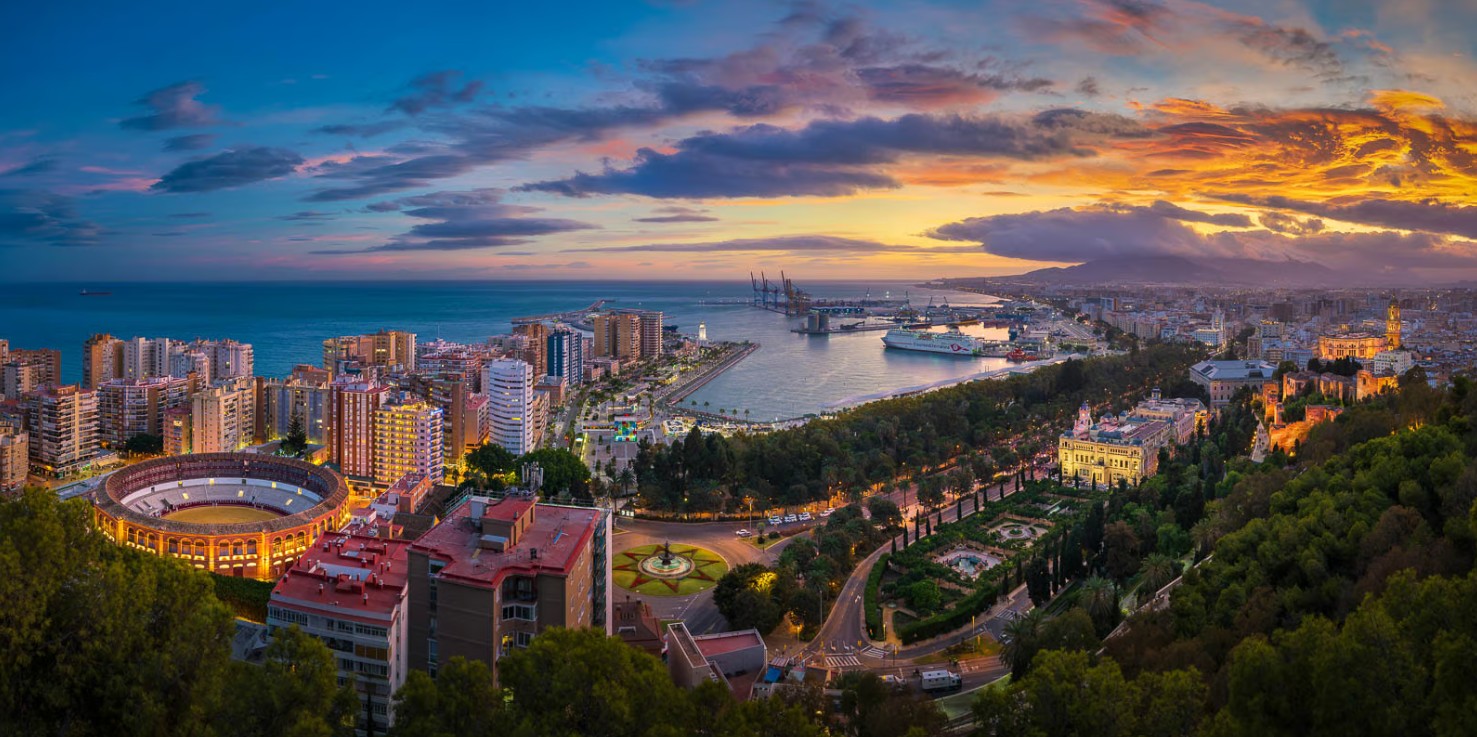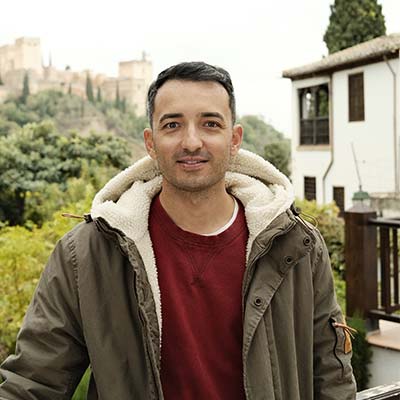Born and raised in Andalusia, we couldn’t resist sharing our take on the best places to visit in Southern Spain. For us, the must-see four are Seville, Granada, Málaga, and Córdoba—probably in that order. Together, they offer the perfect mix of stunning landscapes, rich history, lots of culture, and, of course, incredible food.
It’s never easy to choose—we love so many corners of this region—but we had to draw the line somewhere. If you’re after a local’s perspective on where to go and what to see, this guide will help you plan a great trip. And if you’re looking for a more authentic and personalised experience, don’t miss our Andalusia tour packages.
Table of Contents
Why Visit Andalusia?
Andalusia is a region that, quite simply, has everything. If you ask us, the locals, we’d tell you we might be a little biased, but it’s hard to argue with the facts. With more than 300 days of sunshine a year, an incredible vibe, and a welcoming spirit that makes you feel right at home, it really does have something for everyone. Plus, it’s a place that has been recognised for its world-class blend of cultures and gastronomy, from fresh seafood by the coast to rich meats.
A Land of Contrasts
The landscape here is full of surprises. Head inland and you’ll find the stunning Sierra Nevada mountains, the most prominent in the Iberian Peninsula. In winter, you can even go skiing, and if you make it to the top of the Veleta peak, you might just catch a glimpse of Africa across the sea. The rest of the countryside is covered with olive trees, as we’re the world’s main producer of olive oil. If you visit, you’ll have the chance to tour an olive oil mill and taste different oils, many made by local families.
Then there’s the coastline, with both the Mediterranean and Atlantic on our doorstep. Beyond providing sun-soaked beaches, these coasts meet at the historic site of Gibraltar, where you can literally see the two seas mix. Visiting the British colony is always a fun excursion, if only to see the famous monkeys! And if you drive inland from the coast, you’ll discover the famous white villages—most are lovely, but we recommend creating a route to see Arcos de la Frontera and ending in Setenil de las Bodegas. The houses built right into the rocks there are something truly special.
Cities and Culture
Andalusia’s cities are among its greatest treasures. Seville, our capital, will captivate you with its Gothic cathedral—the final resting place of Christopher Columbus—and the Royal Alcázar palace. Granada is world-famous for the majestic Alhambra and the old Albaicín quarter, not to mention the Royal Chapel where the Catholic Monarchs are buried. Meanwhile, Córdoba’s Mosque-Cathedral stands as a stunning symbol of cultural exchange, and Málaga offers a rich history with its own Alcazaba and Gibralfaro Castle, alongside the incredible Picasso Museum.
But Andalusia is more than just these major hubs. You’ll also find the relaxed coastal vibes of Cádiz and the timeless beauty of smaller inland towns like Úbeda and Baeza, which are full of stunning Renaissance architecture.
A Personal Note from a Local
Having lived in the USA, the UK, and Latin America, it’s a pleasure to be back home in Andalucía. I now take pride in sharing the unique character of this region with our visitors from a local perspective. Currently running the family business, we’re committed not only to maintaining the highest standards, but also to upholding our social responsibility. Our aim is to deliver sustainable tourism that respects both the environment and local communities.
Seville – Best Places to Visit in Southern Spain
History and Culture
Sevilla was an important Roman city, and eventually a key player in Spain’s expansion into the Americas. After the Christian reconquest in the 13th century, Sevilla grew into one of the most powerful cities in Europe. The riches that flowed through its port during the Age of Exploration funded much of its grand architecture, including palaces, churches, and civic buildings that still define its skyline.
This layered past gives the city its unique identity—a mix of Moorish detail, Gothic, and baroque. Traditions like flamenco, Holy Week processions, and local festivals aren’t just performances or tourist attractions; they’re deeply woven into the everyday life of Sevillanos.
Main Attractions
There’s so much to see in Seville, whether it’s your first time or a return visit. The Seville Cathedral dominates the skyline and is well worth visiting—not least because it’s the final resting place of Christopher Columbus. Right next door stands the iconic Giralda Tower, once a minaret and now a bell tower, rising to 104 metres and offering panoramic views over the city. Just a short stroll away, the Royal Alcázar awaits—a must-visit and the oldest royal palace in Europe still in use today.
Wandering through Barrio Santa Cruz is also a must. It’s touristy, yes, but with good reason: the whitewashed houses, narrow alleys, and squares. If you’re looking for something more contemporary, the Metropol Parasol (locals call it “Las Setas”) is a modern landmark that contrasts beautifully with the historic surroundings. It’s a great spot for sunset.
For those interested in visiting the city, our private tour of Seville offers a relaxed and in-depth way to explore its main sights, lesser-known corners, and local culture—with the flexibility to go at your own pace.
Local Cuisine
Eating in Sevilla is part of the experience. You’ll find classics like salmorejo, jamón ibérico, and espinacas con garbanzos (a surprisingly tasty spinach and chickpea stew—though we must admit, it might not be for everyone). If you’re near the Triana neighborhood, try a fried fish platter or grilled cuttlefish.
In warmer months, a cold gazpacho or a glass of tinto de verano hits the spot. And for dessert, torrijas (especially around Easter) or a piece of tocino de cielo are local favorites.
As local experts, we highly recommend a few restaurants where you can enjoy all these traditional dishes in an authentic setting. Some of the most popular spots include El Rinconcillo, and Bodeguita Romero.
Places to Stay
The best place to stay depends on the kind of trip you’re after. If it’s your first time, the historic center is convenient—you’ll be within walking distance of major landmarks, and many hotels are set in beautiful restored buildings with inner patios. For something more relaxed and local, Triana offers a more residential feel.
There are also plenty of mid-range and boutique hotels in El Arenal and Alameda, both lively but not overwhelming. If you’re visiting during Semana Santa or Feria de Abril, it’s smart to book well in advance—these dates are incredibly popular, and prices go up quickly.
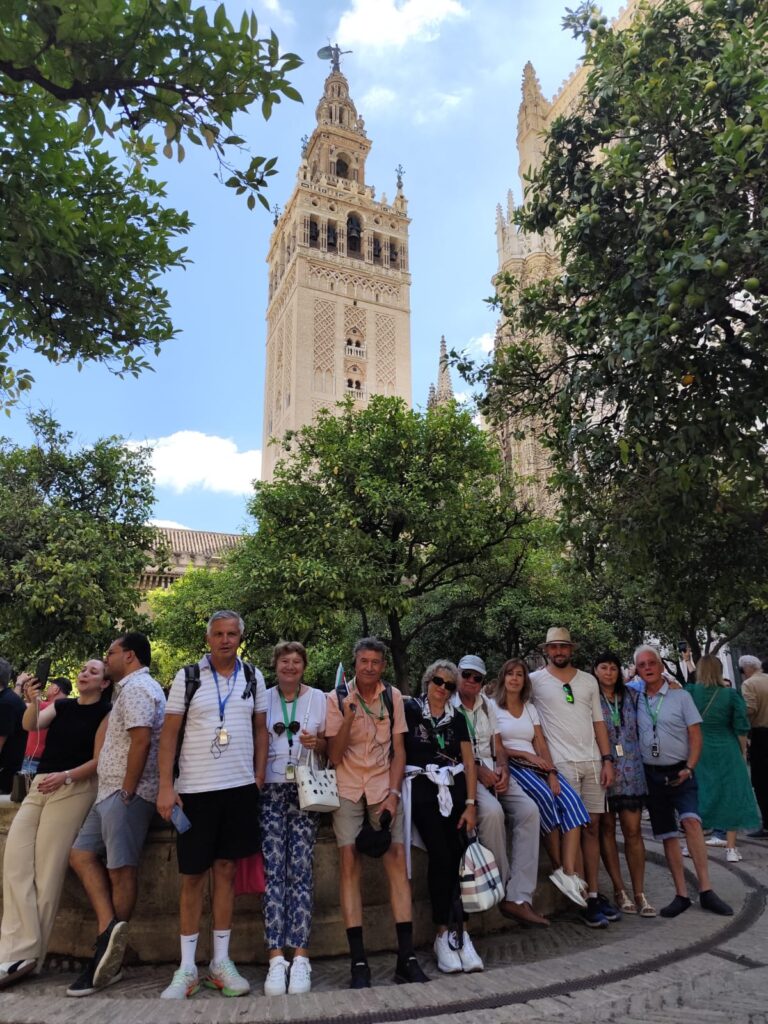
Granada – Best Places to Visit in Southern Spain
History and Culture
As the last stronghold of Muslim rule in the Iberian Peninsula, Granada was the capital of the Nasrid Kingdom until 1492, when it was taken by the Catholic Monarchs. To put it into perspective, Muslims were present in the Iberian Peninsula for nearly 800 years—an extraordinarily long period that deeply influenced the culture, architecture, and society of the region. This long Islamic heritage has shaped the city’s identity—from its architecture and urban layout to its gardens and decorative arts.
Today, Granada is a mix of old and new. You can walk through narrow Moorish alleys in the Albayzín, sip tea in traditional teterías—especially along Calderería Street, where the Arab influence is most prominent— and then, just a few minutes away, find bustling tapas bars, street art, and a young student crowd that brings the city to life.
Main Attractions
The Alhambra is, without a doubt, the main draw, and rightly so. It’s not just a palace—it’s a city within a city, full of courtyards, intricate tilework, and fountains, like the famous one in the Courtyard of the Lions. And of course, the views of the Sierra Nevada and Granada are spectacular.
Just across from the Alhambra, you’ll find the Albayzín, a UNESCO World Heritage Site. It’s worth getting lost in its streets, as its viewpoints (like the Mirador de San Nicolás) offer some of the best panoramas in Spain and, without a doubt, one of the best sunsets in the world. Additionally, in the nearby Sacromonte neighbourhood, you can enjoy an authentic flamenco show in the traditional caves.
You can take a look at our private tour options in Granada and choose the one that best suits your interests and preferences.
Local Cuisine
Granada is famous for its free tapas—order a drink, and you’ll get a small plate of food, often without even asking. The tradition is alive and well, especially around Calle Elvira, Plaza Nueva, and the Realejo district. The food itself reflects both Moorish and Andalusian influences. Try dishes like berenjenas con miel (fried eggplant with cane syrup), migas, or piononos—a sweet local pastry from nearby Santa Fe. Here are a couple of pro tips you can’t miss. Start your morning with a coffee at the Carmen de la Victoria, which has spectacular views. Afterward, we recommend heading to Bar Los Diamantes II in Plaza de los Campos, though we’d advise booking a few days in advance because it’s always packed. They are two essential spots for anyone visiting Granada.
Places to Stay
Many visitors choose to stay in or near the Albayzín or Realejo neighborhoods, both of which are close to the main attractions and full of atmosphere. There are beautiful boutique hotels and guesthouses with views of the Alhambra, as well as restored carmen houses (traditional homes with gardens) that now operate as lodgings.
If you prefer more modern comforts, the city center offers well-equipped hotels just a short walk from everything. For the best value for money, we recommend the Meliá Granada. It’s a great choice.
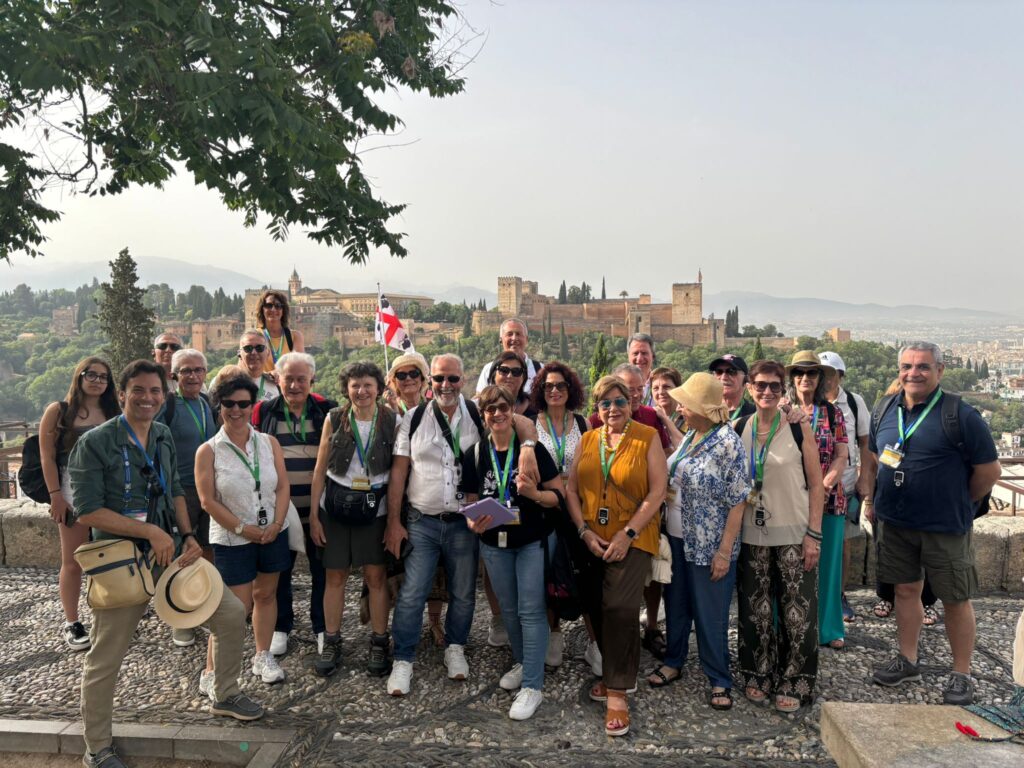
Málaga – Best Places to Visit in Southern Spain
History and Culture
Málaga’s history is a story of layers, born from the sea and revitalised by the spirit of its most famous son, Pablo Picasso. Founded by the Phoenicians some 2,800 years ago, this Andalusian port city has been a crossroads for civilizations, leaving behind an incredible legacy of Roman, Moorish, and Christian influences that are still visible today. But it was in the late 20th century that the city truly transformed itself. What was once seen primarily as a gateway to the sun-soaked Costa del Sol began a remarkable cultural reinvention, inspired by Picasso’s genius and heritage.
Although Picasso left Málaga as a young boy, the city never left him. His Andalusian roots—from the vivid bullfights he watched with his father to the Mediterranean light and culture that surrounded him—continued to appear in his work throughout his life. This enduring connection became the catalyst for Málaga’s modern cultural boom. In 2003, the opening of the Museo Picasso Málaga, with nearly 300 works donated by his family, marked the turning point. This event spurred a complete urban renewal, turning Málaga into a vibrant hub with over 36 museums and a renewed appreciation for its rich artistic identity. Today, Málaga honors its past while embracing its future as a dynamic and welcoming cultural capital.
Main Attractions
Málaga today is a city that invites you to explore its mix of ancient history and cutting-edge culture. Your journey through the city’s past can start at the Alcazaba, a Moorish fortress-palace that sits alongside the ancient Roman Theatre, a perfect visual of the city’s layered history. For panoramic views, a visit to the Gibralfaro Castle is a must. From here, you can see the entire cityscape, the port, and the Mediterranean Sea.
For art lovers, the city is a paradise. At the heart of it all is the Museo Picasso Málaga, housed in a beautifully restored palace where you can trace the genius of the artist back to his roots. The city’s cultural scene extends to its modern port, where the Centre Pompidou Málaga—the first satellite of the famous Parisian museum—stands out with its colorful glass cube. Further inland, you can explore the Malaga Museum and the Centre for Contemporary Art in the city’s lively Soho district. Together, these sites make it clear that Málaga has stepped up and positioned itself alongside the other major cities of Andalusia.
Local Cuisine
Eating in Málaga is a celebration—especially if you love seafood. One of the city’s most iconic dishes is the espeto de sardinas: sardines grilled over an open wood fire, best enjoyed with your feet in the sand at one of the many chiringuitos (beach bars) along the coast. Another must-try is the fritura malagueña, a platter of lightly fried local fish, and the porra antequerana, a thicker, richer version of gazpacho.
For a true local vibe, head to the Mercado de Atarazanas, a lively 19th-century market packed with fresh produce and tapas. Join the locals as they crowd around high counters, sharing plates of seafood paella infused with ripe tomatoes and Arabian saffron, or slurping conchas finas—fresh clams drenched in garlicky sherry butter. Don’t miss the addictive pimientos de Padrón, often served in the nearby tapas bars.
And if you’re up for something truly unique, take a short trip along the coast to El Tintero, a one-of-a-kind, no-menu seafood restaurant. Waiters walk among diners holding trays of the day’s catch—just call out when you see something you like. It’s chaotic, loud, and wonderfully fun—a proper Malagueño way of enjoying food with friends and family.
Places to Stay
The best place to stay depends on the kind of trip you’re looking for. If it’s your first time in the city, the historic center is a great choice. You’ll be within walking distance of all the major landmarks, and the area is full of life, especially in the evenings. For a more relaxed and artistic vibe, the Soho neighborhood is a fantastic option, with its street art and cool, independent cafes. If your priority is being close to the sea, look for accommodation in the Malagueta neighborhood or near the Playa de la Misericordia.
For the best value for money, we recommend the Hotel Larios. A great combination of location, comfort, and service makes this an easy recommendation.
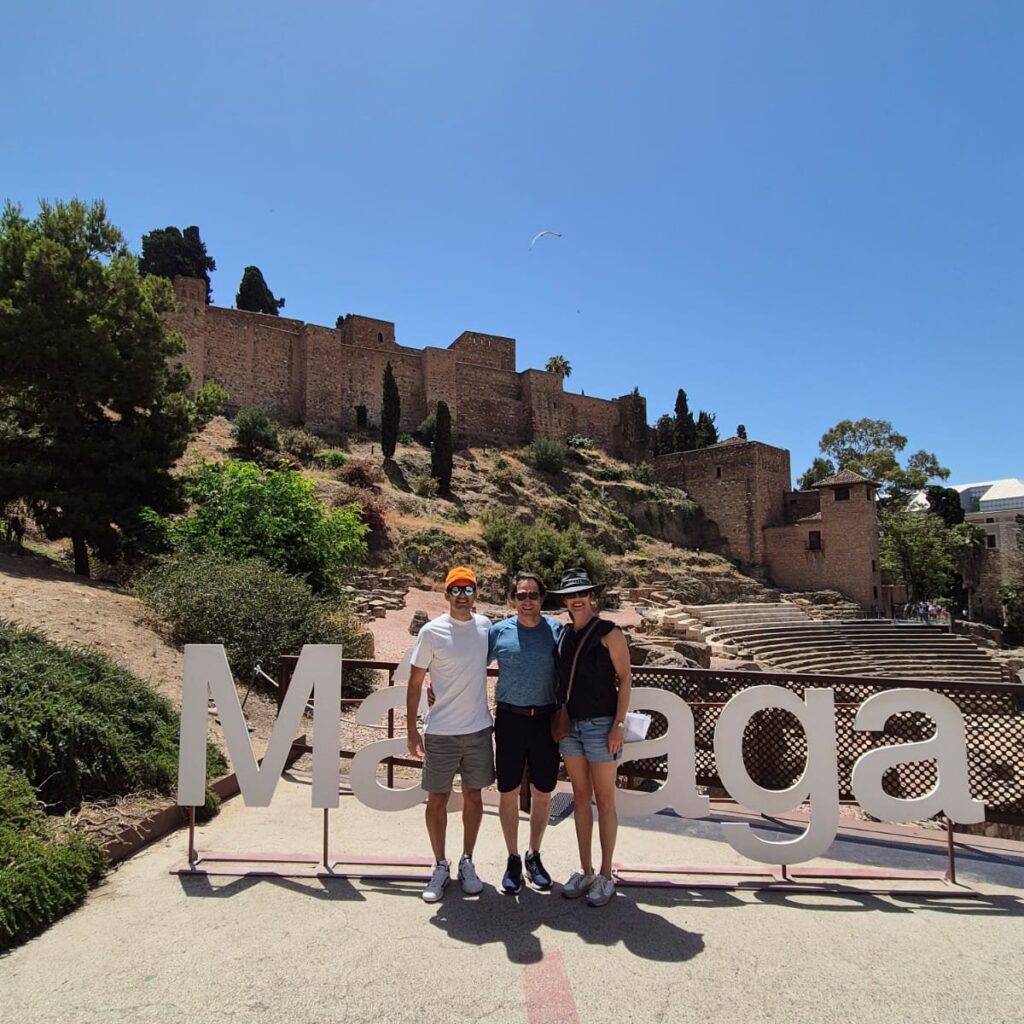
Córdoba – Best Places to Visit in Southern Spain
History and Culture
Córdoba is a city shaped by centuries of transformation, and nowhere is that more evident than in its most emblematic landmark: the Mosque-Cathedral. Built on the site of a Roman temple, later replaced by a Visigothic basilica, it was eventually transformed by the Umayyads into one of the most magnificent mosques in the Islamic world.
When Abd al-Rahman I established Córdoba as the capital of Al-Andalus in the 8th century, he began the construction of a grand mosque. Over the next two centuries, his successors expanded and embellished it—adding elegant arches, tranquil courtyards, and a striking minaret. Step inside today, and you’ll find a vast forest of columns topped with red-and-white arches. At its heart lies the mihrab, a golden prayer niche—a masterpiece of Islamic art.
Later, when Christian forces reclaimed the city in the 13th century, a cathedral was built within the mosque’s walls. Instead of destroying the original structure, they layered their faith over it, creating a rare architectural palimpsest—one that reflects centuries of devotion, conquest, and coexistence.
You can experience this story firsthand with our Mosque-Cathedral of Córdoba Private Tour, guided by local experts who bring the site’s history to life.
Main Attractions
The city’s history is told not only by the Mosque-Cathedral, but also by the old Jewish Quarter (La Judería) just steps away, which represents another important chapter in the city’s history. Between the 10th and 15th centuries, this was the area where the Jewish community lived, hence its name. This authentic maze of narrow streets is one of Córdoba’s most significant sites. Here you’ll find the Synagogue, the only one in Andalusia and the third best preserved from that period in Spain. Just opposite stands the Casa de Sefarad, or House of Memory, a cultural centre dedicated to preserving the legacy of Sephardic (Jewish-Spanish) tradition.
Finally, be sure to visit the Alcázar de los Reyes Cristianos, a fortress-palace with peaceful gardens and panoramic towers, and take a stroll across the Roman Bridge, especially beautiful at sunset.
Local Cuisine
Córdoba’s food is hearty and traditional, often with deep Andalusian roots. One of the most famous local dishes is salmorejo, a thick, creamy tomato soup usually topped with jamón and boiled egg. You’ll also find flamenquín (a rolled, breaded pork dish) and rabo de toro, a slow-cooked oxtail stew that’s rich and flavorful.
During the Festival de los Patios in May, many private courtyards open their doors to the public and become the center of daily life. Some of the most celebrated include the courtyard at Calle San Basilio 44, and the historic Casa de Las Campanas on Calle Siete Revueltas 1—both often awarded for their traditional style.
Places to Stay
Córdoba has plenty of accommodation options located within walking distance of the Mezquita. Staying in the historic center gives you easy access to major sights and the chance to experience the city after day-trippers have left. You can also find boutique hotels set in old mansions with interior patios, which offer a great deal of character and atmosphere.
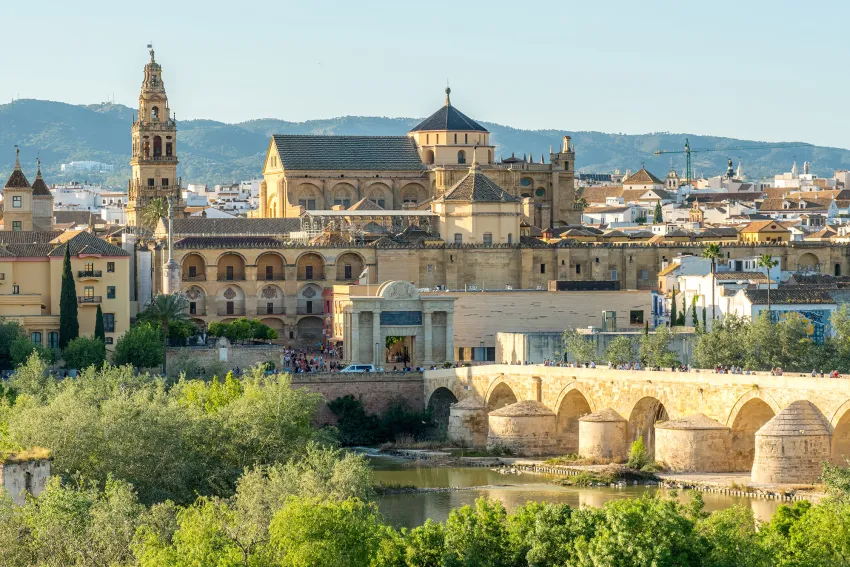
Other Destinations: Best Places to Visit in Southern Spain
Although Seville, Granada, Málaga, and Córdoba often take centre stage, Andalusia has much more to offer beyond its most visited cities. Take Cádiz, for example—a coastal destination with a unique blend of history and geography. Surrounded by both the Mediterranean and Atlantic, the contrast between its beaches is quite remarkable. Cádiz was once nearly an island, and its particular location has played a key role throughout history.
During the Napoleonic invasion, the city became a refuge for the Cortes Generales and a symbol of resistance. Its strategic position and fortified defences allowed it to withstand a long siege and become the political centre of unoccupied Spain.
Cádiz also shines when it comes to food. Be sure to try the local tuna—especially from nearby Barbate—and the famous tortilla de camarones, a crispy shrimp fritter that’s full of flavour and tradition.
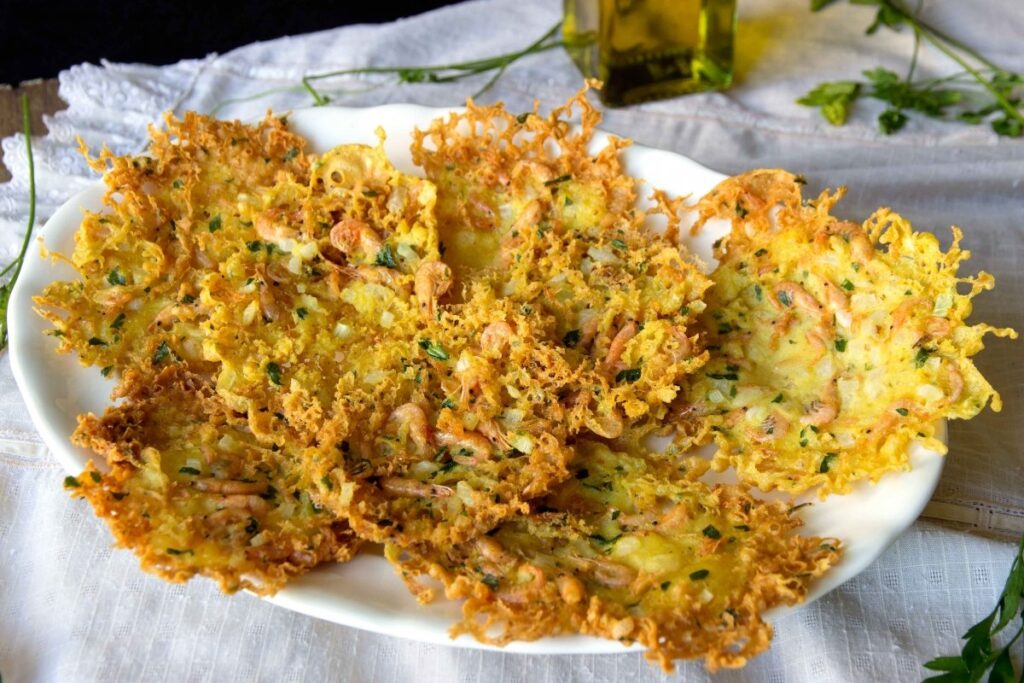
Conclusion
This guide on the Best Places to Visit in Southern Spain reveals what makes Andalusia such a remarkable destination—rich in history, culture, and natural beauty at every turn. From the majestic Alhambra in Granada to the iconic monuments of Seville, the appeal of the white villages, and the modern flavours of Málaga. It’s not just a place to visit—it’s a place to feel, to experience, and, for many, to fall in love with.
We hope this local perspective has offered you more than just facts—perhaps a glimpse into the soul of the region we proudly call home. Because while a guide can show you the landmarks, it’s the stories behind them, the people you meet, and the places you discover with someone who truly knows the land that turn a trip into a lifelong memory.
So, if you’re ready to turn inspiration into a real, personal journey, we’d be honoured to help craft that experience. We look forward to welcoming you and sharing this beautiful corner of the world with you—in a way only locals can. Get in touch, and let’s plan your Andalusia trip together!

